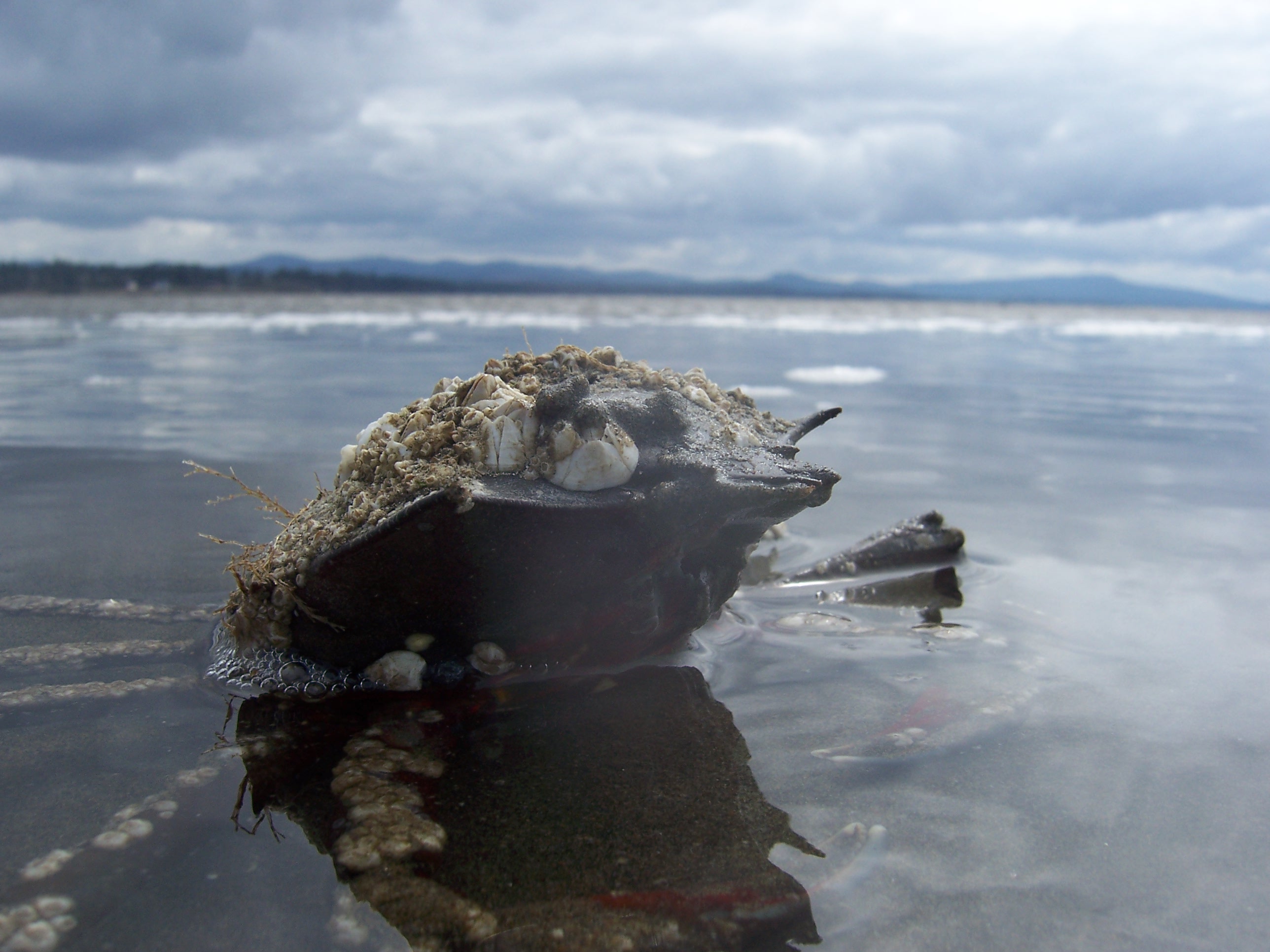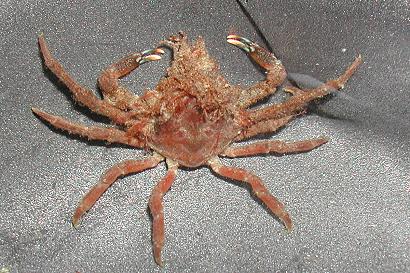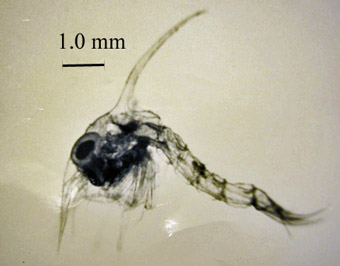
Limb specialization is what sets the crustaceans apart from other marine organisms. The claws of crabs are chelate, the movible portion closing directly against the immovible base. The burrowing shrimps such as the Neotrypaea californiensis have a movible finger that closes flat, giving the claw the appearance of an extra hinged joint. These sub-chelate claws are used for burrowing and protection as a sheild.
Many crustaceans, especially shrimps, are excellent hunters. The mobile species have compound eyes which greatly increase their effictiveness. This, combined with their keen sense of balance and camouflage, has allowed them to maintain a presence in the Pacific Northwest.


Crustacean young have little to no resembelance to their parents. After hatching, the prezoea feeds from the remains of its egg sac until it becomes more developed. As a zoea it is a true larvae, feeding on smaller plant and animals with its biramous mouth parts.
It is important to note that the zoea has an exoskeleton and must molt in order to grow. Successive moltings produce more defined appendages and species specific traits, Cancer spp. resembeling a cross between a shrimp and a crab.
This final juvenile stage is called a megalops. Here, the crustacean selects a habitat in which to mature and it grows further, finally becoming an adult organism.